When it comes to athletic training, having the right equipment is essential for providing effective care and rehabilitation. One vital piece of equipment that plays a crucial role in the process is the treatment table. Treatment tables for athletic training provide a stable and comfortable surface for conducting various therapies, examinations, and treatments. In this article, we will explore the top features to look for when choosing athletic training treatment tables specifically designed for athletic training. By considering these features, you can ensure that you invest in a table that meets the unique needs of your athletes and facilitates optimal performance.
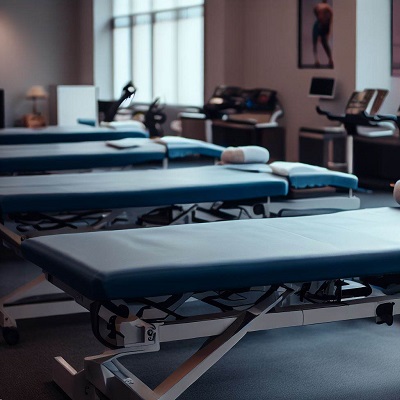
Athletic training involves constant use and heavy loads, so durability is a key factor to consider. Look for athletic training treatment tables constructed from high-quality materials such as sturdy metals or hardwood. Reinforced frames and robust support mechanisms are essential to withstand the demands of athletic environments and ensure longevity. Tables that come with warranties or guarantees for durability provide added peace of mind.
Flexibility and adjustability are crucial features for treatment tables for athletic training. Opt for tables that offer multiple height adjustments to accommodate various treatment techniques and therapists of different heights. Additionally, consider tables with adjustable sections such as backrests, leg rests, and armrests. This adaptability allows for customized positioning to maximize comfort and efficiency during therapy sessions. Look for easy-to-use locking mechanisms that securely hold the desired positions.
Comfort is vital for athletes undergoing treatment and rehabilitation. Adequate padding, particularly on the table's surface, ensures a comfortable experience for athletes during therapy sessions. Look for treatment tables with high-density foam padding that offers excellent cushioning and support. The foam should be resilient and durable, able to withstand frequent use without losing its shape. Additionally, consider tables with removable or washable upholstery for easy maintenance and hygiene.
Portability is often a crucial factor, especially if you need to transport the treatment table between different locations. Look for tables that are lightweight and feature folding or collapsible designs for easy storage and transportation. Portable treatment tables with built-in wheels or carrying handles provide convenience and flexibility for athletic trainers on the go. Ensure that the table is easy to set up and pack away, without compromising on stability or durability.
Safety is paramount in athletic training, and treatment tables must provide a stable platform for various therapeutic activities. Look for tables with a stable base and sturdy construction that can support the weight of athletes during treatments. Anti-slip foot pads or grips on the table's base prevent unnecessary movement or sliding during therapy sessions. Sturdy locking mechanisms for adjustable sections ensure stability and prevent accidental movements that could lead to injuries.

Consider the availability of storage options when selecting a treatment table. Some tables feature built-in shelves, drawers, or accessory holders that provide convenient storage for therapeutic tools, equipment, and supplies. Having essential items easily accessible during treatments enhances efficiency and saves time. Ensure that the storage compartments are well-designed, sturdy, and spacious enough to accommodate your specific needs.
Athletic training often involves working with athletes of different sizes and body types. Ensure that the treatment table you choose has an appropriate weight capacity to accommodate athletes comfortably. Verify the weight limit specified by the manufacturer to ensure the table can support the individuals who will be using it. It's important to consider both the static weight capacity (when the athlete is lying or sitting) and the dynamic weight capacity (when the athlete is moving or undergoing therapy).
Incorporating electrical outlets in treatment tables can be highly advantageous. These outlets allow for the use of electrical devices, such as electrical stimulators or ultrasound machines, directly on the treatment table. Look for tables with integrated outlets and convenient cable management systems to facilitate the use of electrical equipment seamlessly. Ensure that the outlets meet safety standards and are easily accessible, allowing for efficient and organized electrical connections.
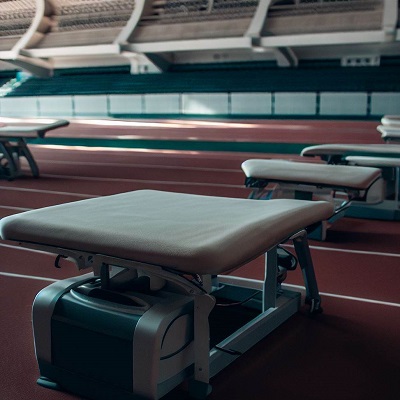
Maintaining a clean and hygienic treatment environment is essential in athletic training. Consider treatment tables with antimicrobial or easy-to-clean upholstery materials that help minimize the risk of infection. Tables with removable or washable covers make it easier to maintain hygiene standards. Additionally, choose tables with smooth surfaces and minimal crevices to prevent dirt or contaminants from accumulating. Follow the manufacturer's guidelines for proper cleaning and maintenance to prolong the lifespan of the table.
While the above features are essential, consider any additional features that may enhance your athletic training practices. Examples include tables with built-in heating or cooling elements, tables with ergonomic designs to reduce strain on therapists, or tables with specialized attachments for specific treatments or modalities. Assess your specific needs and preferences to determine which additional features would provide the most value to your athletic training facility.
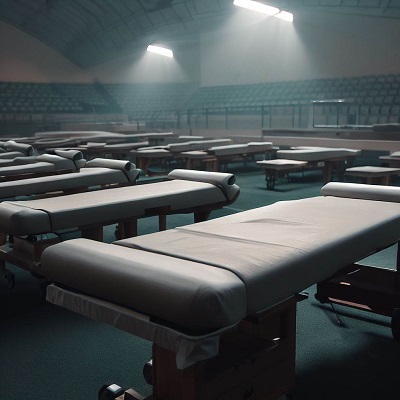
Athletic trainers play a critical role in the healthcare and performance of athletes. To effectively carry out their duties, having the right equipment is essential, and treatment tables are among the primary tools they rely on. Treatment tables designed for athletic trainers provide a supportive and versatile surface for conducting various treatments, examinations, and rehabilitation exercises. In this article, we will compare different types of treatment tables specifically tailored for athletic training. By exploring the features, benefits, and considerations of each type, you can make an informed decision when choosing the most suitable treatment table for your athletic training needs.

Standard treatment tables are the most common type used by athletic trainers. They typically feature a flat, padded surface and adjustable height capabilities. Standard tables are versatile, offering a stable platform for a wide range of treatments and modalities. They are often budget-friendly and suitable for general-purpose use in athletic training facilities. These tables provide a solid foundation for assessments, therapeutic exercises, and basic treatments.
Taping tables are specifically designed to facilitate the application of athletic tape and provide a dedicated space for taping procedures. These tables typically have a long, narrow surface that allows athletes to lie down comfortably while trainers apply tape to specific areas. Taping tables often feature adjustable sections, such as removable or adjustable leg rests, to accommodate different taping techniques and athlete sizes. Some taping tables also come with built-in storage for easy access to tape supplies and tools.
For athletic trainers who frequently travel or work in multiple locations, portable treatment tables are an excellent choice. These tables are lightweight, foldable, and easy to transport. Portable tables often feature a compact design and come with carrying cases or handles for convenient mobility. Despite their portability, they maintain sturdiness and stability, making them suitable for on-the-go athletic training sessions, events, or away games. Look for portable treatment tables that offer quick and hassle-free setup without compromising on durability.
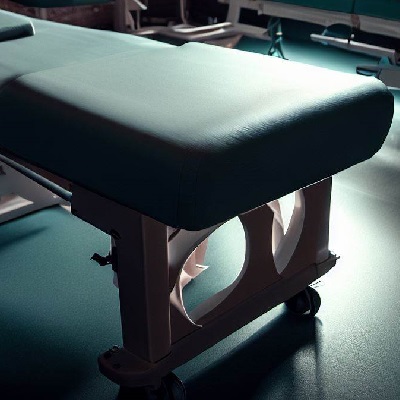
Electric treatment tables offer a high level of convenience and adjustability. These tables are powered by electric motors, allowing effortless adjustments of height, angles, and sections. Electric tables can be controlled using buttons or remote controls, providing precise positioning for different treatment techniques. This feature is particularly beneficial for trainers who need to frequently adjust the table's height during therapy sessions. Electric treatment tables often come with additional features like memory settings, where you can save preferred positions for quick and easy adjustment.
Sports-specific treatment tables are designed with the unique needs of certain sports in mind. For example, tables used for football may have extensions or cutouts to accommodate shoulder pads or helmets. Similarly, tables for basketball may have wider surfaces to provide ample space for stretching and joint mobilization. These sports-specific tables are tailored to enhance the treatment experience for athletes in particular sports and can contribute to more targeted and effective therapy.
Hydraulic treatment tables utilize hydraulic systems to adjust height and sections. These tables are operated by foot pedals or levers, allowing for smooth and easy adjustments. Hydraulic tables provide stability and strength, making them suitable for athletes of varying sizes and weights. They are known for their durability and require minimal maintenance. Hydraulic treatment tables are a reliable choice for athletic trainers seeking a user-friendly, manual-adjustment option without the need for electrical power.
In addition to the standard types mentioned above, there are specialty treatment tables designed for specific therapeutic techniques or requirements. These tables cater to specialized treatments such as traction, massage, chiropractic adjustments, or sports-specific modalities. Specialty tables often have unique features, attachments, or built-in equipment to facilitate these specialized treatments effectively. Consider your specific needs and the types of treatments you frequently administer when exploring specialty treatment tables.
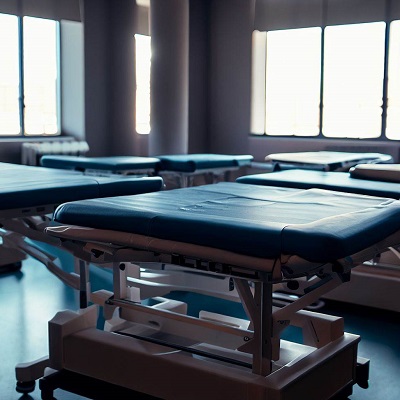
Choosing the right treatment table is crucial for athletic trainers to provide optimal care, rehabilitation, and performance enhancement for athletes. By comparing different types of treatment tables, including standard tables, taping tables, portable tables, electric tables, sports-specific tables, hydraulic tables, and specialty tables, you can make an informed decision based on your specific requirements.
Consider factors such as versatility, portability, adjustability, durability, and specialty features when selecting a treatment table. Keep in mind the nature of your athletic training practice, the types of treatments you provide, and the unique needs of the athletes you work with. Prioritize tables that provide stability, comfort, and easy adjustability to accommodate different treatment techniques and athlete sizes.
Additionally, pay attention to the quality of construction, materials used, warranty, and customer reviews when considering different treatment tables. The primary focus should always be on providing valuable care and treatments to athletes, so choose a table that best aligns with your professional goals and enhances the overall athletic training experience.
Remember to conduct thorough research, visit reputable suppliers or manufacturers, and seek recommendations from fellow athletic trainers to make an informed decision. By investing in the right treatment table, you can create a supportive and efficient environment that positively impacts the well-being and performance of the athletes under your care.